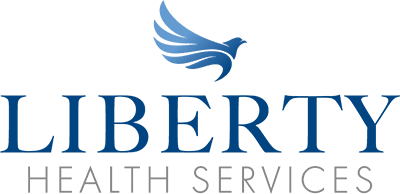What Is Methadone: The Facts
Methadone is an important medication used in addiction treatment. It is a synthetic narcotic specifically designed to help individuals who are dependent on opioids. This prescription medication works by affecting the same brain receptors as other opioids, providing a stabilizing effect without causing the intense high associated with drugs like heroin.
Key characteristics of methadone:
- Long-acting synthetic opioid
- FDA-approved for addiction treatment
- Regulated prescription medication
- Available through specialized clinics
The significance of methadone in addiction treatment cannot be understated. As a key component of Medication-Assisted Treatment (MAT), but if you or a loved on is struggling with opioid use disorder it is important to know that Methadone is not the only option.
Benefits in addiction treatment:
- Reduces risk of overdose
- Helps maintain steady employment
- Supports family stability
- Decreases criminal activity
- Prevents spread of infectious diseases
You’ll find methadone treatment available through specialized clinics called Opioid Treatment Programs (OTPs). These facilities provide structured environments where medical professionals can monitor your progress and adjust treatment plans as needed. The effectiveness of the medication, combined with proper medical supervision, creates a pathway for successful long-term recovery from opioid addiction.
However, it’s important to understand how methadone is administered and be aware of potential side effects that may arise during treatment.
What is Methadone?
Methadone is a synthetic narcotic medication designed to interact with the brain’s opioid receptors. It is classified as a full opioid agonist, meaning it fully binds to these receptors and produces effects similar to natural opioids such as morphine or codeine.
How Does Methadone Work?
The drug’s unique molecular structure creates a long-lasting effect in your body, with a single dose typically remaining active for 24-36 hours. This extended duration sets methadone apart from shorter-acting opioids and makes it particularly effective for:
- Stabilizing brain chemistry
- Reducing drug cravings
- Managing chronic pain conditions
- Preventing withdrawal symptoms
Legal Classification and Regulations
Under the Controlled Substances Act, methadone is classified as a Schedule II controlled substance. This classification reflects both its medical value and potential for abuse. The legal framework surrounding methadone requires:
- Strict inventory controls
- Secure storage requirements
- Detailed record-keeping
- Specific prescribing protocols
- Distribution through licensed facilities
Forms of Methadone
The medication comes in several forms, including tablets, oral solutions, and injectable formulations. Each form undergoes rigorous quality control measures to ensure consistent potency and safety standards.
Who Takes Methadone?
Methadone serves two primary patient groups:
1. Individuals with Opioid Use Disorder (OUD)
- Adults seeking recovery from heroin addiction
- People struggling with prescription opioid dependence
- Long-term opioid users requiring medication-assisted treatment
- Pregnant women with OUD, under careful medical supervision
2. Chronic Pain Patients
- Individuals with severe, persistent pain conditions
- Cancer patients requiring long-term pain management
- Patients who haven’t responded to other pain medications
- Those needing round-the-clock pain relief
Treatment access requires enrollment in SAMHSA-certified Opioid Treatment Programs (OTPs). These specialized facilities provide:
- Daily medication dispensing
- Regular health monitoring
- Substance use counseling
- Random drug screening
- Individualized treatment planning
The average methadone patient age ranges from 25 to 55 years, with varying socioeconomic backgrounds. Research indicates men slightly outnumber women in methadone treatment programs, though the gender gap continues to narrow.
SAMHSA certification ensures these treatment centers maintain strict protocols for:
- Proper dosage administration
- Patient screening
- Medical supervision
- Record keeping
- Emergency response procedures
These requirements help maintain treatment safety and effectiveness while reducing the risk of medication misuse.
How Do People Abuse Methadone?
Methadone abuse occurs through several dangerous methods, each carrying significant health risks. Users might:
- Take higher doses than prescribed
- Combine methadone with other substances
- Crush and snort tablets
- Inject liquid forms directly into veins
- Take doses more frequently than prescribed
People abuse methadone for various reasons:
- Seeking a euphoric high
- Self-medicating emotional pain
- Managing withdrawal symptoms
- Attempting to enhance the effects of other drugs
- Dealing with chronic pain without proper medical supervision
The risks of methadone abuse are severe and potentially fatal:
- Immediate Dangers
- Respiratory depression
- Heart rhythm problems
- Seizures
- Coma
- Death from overdose
- Long-term Complications
- Physical dependence
- Liver damage
- Cognitive impairment
- Chronic health issues
- Social and professional problems
The risk of overdose is particularly high with methadone due to its long half-life. Users might take additional doses before the previous dose has cleared their system, leading to dangerous drug accumulation. This risk increases when methadone is combined with alcohol, benzodiazepines, or other opioids.
Understanding Dosage Guidelines for Methadone Treatment
Methadone dosage requirements vary significantly among patients, with effective doses ranging from 20mg to 200mg daily. A high dose typically exceeds 100mg per day, though individual needs differ based on several factors:
- Previous opioid use history
- Duration of addiction
- Types of opioids used
- Typical daily consumption
- Individual health factors
- Liver function
- Body weight
- Metabolism rate
- Concurrent medications
Medical providers assess these factors through comprehensive evaluations before determining appropriate dosage levels. Your treatment team will start with lower doses, typically 20-30mg, and adjust based on your response. This careful titration process helps prevent adverse effects while ensuring therapeutic benefits.
Regular monitoring through blood tests and clinical assessments guides dosage adjustments throughout your treatment journey. Your provider might increase or decrease your dose based on withdrawal symptoms, cravings, and side effects.
Understanding Low Dose Definitions in Methadone Treatment Plans
Low-dose methadone treatment usually begins with a daily dose of 10-30mg. This initial dosage serves several purposes for medical providers:
- Evaluating how the patient responds to the treatment
- Reducing the risk of side effects
- Gradually increasing tolerance to opioids
- Lowering the risk of overdose
The starting doses for methadone treatment depend on various clinical factors, including:
- The patient’s current opioid tolerance
- Their medical history
- Age and weight considerations
- Any co-existing health conditions
In general, a “low dose” of methadone is typically defined as ranging from 20-60mg per day. Most patients begin at the lower end of this range, and healthcare providers make careful adjustments to the dosage based on how the patient responds to the treatment. This gradual increase approach allows doctors to find the minimum effective dose that relieves withdrawal symptoms without causing unnecessary dependence on opioids.
It’s important to note that different treatment centers may have their own definitions of “low dose” based on their specific protocols and the populations they serve.
Can I Detox from Methadone? Understanding the Detoxification Process and Withdrawal Symptoms
Detoxing from methadone requires careful medical supervision due to its long-acting nature. The process typically spans several weeks to months, with gradual dose reduction to minimize withdrawal symptoms. It’s essential to seek assistance from a professional methadone detox program to ensure safety and effectiveness.
Common withdrawal symptoms include:
- Muscle aches and joint pain
- Severe anxiety and depression
- Insomnia and restlessness
- Nausea and vomiting
- Excessive sweating
- Irregular heartbeat
Your healthcare provider will create a personalized tapering schedule based on your:
- Current methadone dose
- Length of treatment
- Physical health status
- Previous withdrawal experiences
Medical supervision during detox provides:
- 24/7 monitoring of vital signs
- Management of withdrawal symptoms
- Emergency medical intervention if needed
- Psychological support
- Safe environment for recovery
Never attempt to detox from methadone without professional medical support. Sudden cessation can lead to severe withdrawal symptoms and potential health complications. For those in need of immediate assistance, contact our team at Liberty Health Services to discuss you or your loved one’s situation. We offer offer private medical detox programs, at our NH Opiate Detox Center, which can provide the necessary support during this challenging time.
It’s also important to explore various substance use treatment options that may be available. These options can include medication-assisted treatment, behavioral therapies, or a combination of both, depending on individual needs.
Understanding the nature of withdrawal is crucial for anyone considering detoxification. According to recent research, the severity and duration of withdrawal symptoms can vary widely among individuals, influenced by factors such as the length of use, dosage, and individual physiology (source). Therefore, having a comprehensive understanding of these factors can significantly aid in the planning and execution of a successful detoxification process.
Alternatives to Methadone Treatment: Exploring Other Medications Used in OUD Treatment Beyond Just Buprenorphine
While methadone treatment is a common approach for Opioid Use Disorder (OUD), several FDA-approved medications offer effective alternatives:
- Buprenorphine (Suboxone): A partial opioid agonist that reduces cravings with lower overdose risk than methadone
- Naltrexone (Vivitrol): An opioid antagonist administered monthly through injection, blocking opioid effects
- Naloxone: Used in combination therapy to prevent opioid misuse
Each medication suits different patient needs:
- Buprenorphine works well for patients requiring flexible treatment schedules
- Naltrexone benefits highly motivated patients who’ve completed detox
- Combined therapies offer enhanced protection against relapse
The choice between medications depends on:
- Previous treatment history
- Individual medical conditions
- Lifestyle requirements
- Access to treatment facilities
- Personal recovery goals
These alternatives provide personalized treatment options, allowing healthcare providers to tailor OUD treatment to each patient’s specific circumstances.
Understanding Fentanyl Detox Challenges Compared to Other Opioids
Fentanyl detox presents unique challenges due to its potency – up to 50 times stronger than heroin. The withdrawal symptoms hit harder and faster:
- Intense cravings start within 2-4 hours
- Physical symptoms peak at 24-48 hours
- Mental effects can last weeks or months
The rapid onset of fentanyl withdrawal requires specialized medical supervision. Traditional detox protocols designed for heroin or prescription painkillers often prove inadequate for fentanyl dependence.
With a comprehensive approach that combines medical supervision, psychological support, and access to appropriate medications like buprenorphine or naltrexone, individuals struggling with fentanyl addiction can receive the tailored care they need for a successful detox and recovery journey.
- Length of fentanyl use
- Average daily dosage
- Previous detox attempts
- Current health status
Medical professionals may need to adjust standard methadone dosing schedules to effectively manage fentanyl withdrawal symptoms. The heightened overdose risk during detox demands 24/7 monitoring in a clinical setting. Psychological support during detox is crucial, as individuals may experience intense cravings and emotional distress. Access to medication-assisted treatment (MAT) can also greatly enhance the chances of a successful recovery. Buprenorphine or naltrexone can help reduce cravings and prevent relapse, while methadone may be necessary for individuals with severe fentanyl dependence. It is important to note that detox alone is not sufficient for long-term recovery. Comprehensive addiction treatment programs that include therapy, support groups, and aftercare services are essential for sustained sobriety.
Help for Methadone Addiction, Fentanyl, and Other Opiates
Taking the first step towards recovery is a powerful decision. By choosing to find the best rehab in NH, you’re starting a journey towards a healthier and more fulfilling life. Liberty Health Services is here to help you on this journey with personalized treatment plans designed to help you regain your health and rebuild your life.
Whether you’re facing addiction challenges or supporting someone you care about, reaching out to Liberty Health Services can be the crucial turning point for long-term recovery success.
They provide individualized support and professional care, making them one of the top choices for addiction treatment rehab in Laconia. Embrace this chance for transformation and find out how these rehab options can bring about lasting change.
If you’re thinking about this journey, don’t hesitate to contact Liberty Health Services for more details about their services or to check your insurance benefits using their easy insurance verification form.


